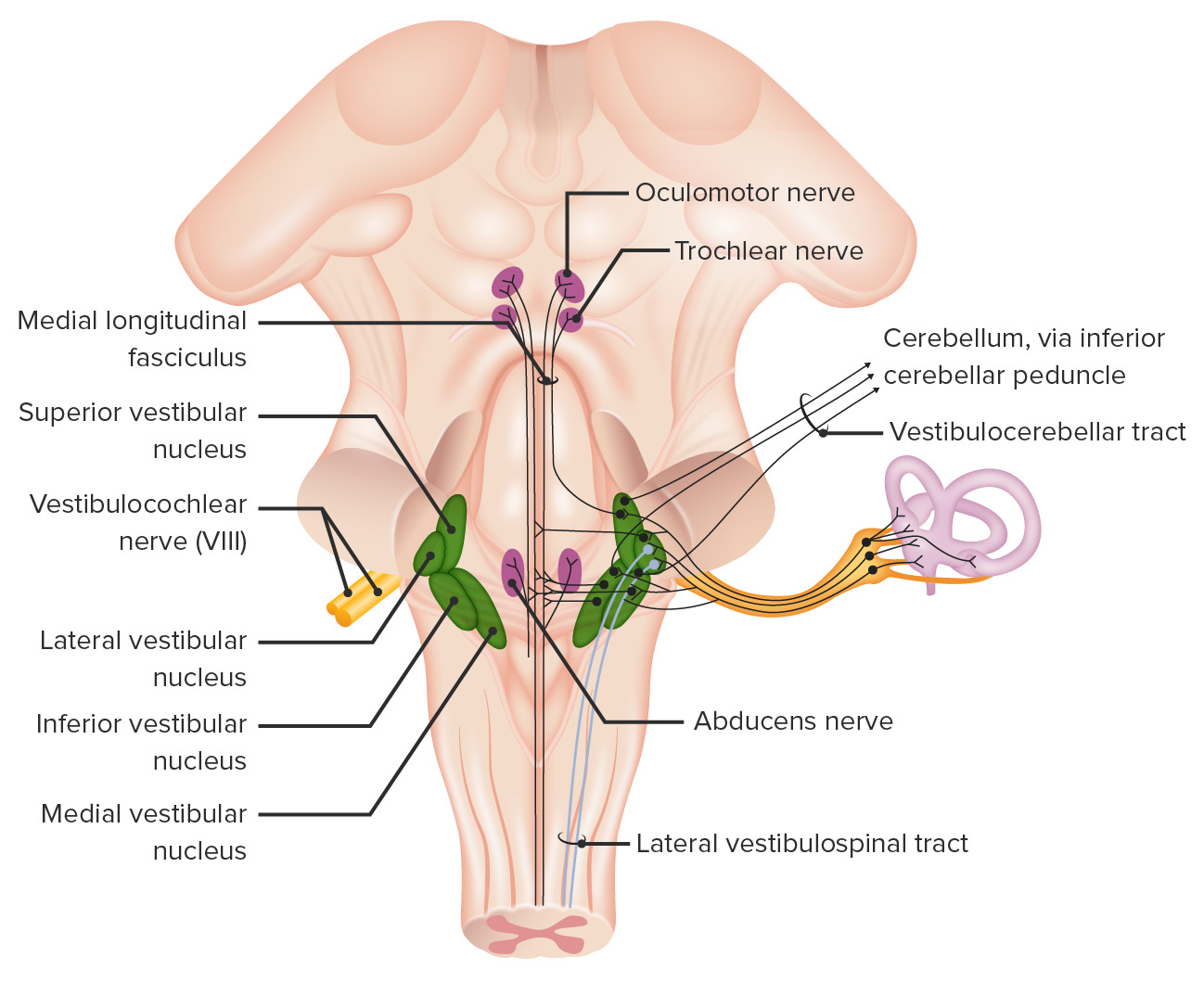Playlist
Show Playlist
Hide Playlist
Organ of Corti
-
Slides Vestibular system.pdf
-
Reference List Histology.pdf
-
Download Lecture Overview
00:01 Again, let's go to a diagram for an explanation of how this organ of Corti works. Have a look at the hair cells. Outer hair cells and inner hair cells, I'm not going to separate between each of those. The hair cells are strongly again supported by different supporting cells, the outer and the inner phalangeal cells. They wrap around the base of the cells and they send the process up to link across near the apex of the hair cells where the stereocilia are. There are other supportive cells there, the pillar cells. They create a tunnel between the pillar cells that support the inner hair cells and the pillar cells that support the outer hair cells. And then the hair cells themselves have both afferent and efferent terminals. The afferent terminals are again from the ganglion cells in the spiral ganglion. They're going to take information back to the central nervous system from impulses that these hair cells will send then those efferent nerve fibres. These cells sit on the basilar membrane. And the basilar membrane and the organ of Corti itself is attached to the spiral lamina. It's a thin projection from the modiolus bone. So on the base is the basilar membrane. 01:43 And the other very important point is that the hair cells themselves are in contact or close apposition to the tectorial membrane above. That tectorial membrane again projects from the bony modiolus. It's a gelatinous type substance. And what is going to happen is that on the base, on the basilar membrane, when that starts to vibrate, it creates a shear force between the tectorial membrane and the hair cells. The tectorial membrane actually touches those stereocilia. And that touching of the stereocilia caused by the vibration of the basilar membrane stimulates a nerve impulse. And that nerve impulse is used to detect sound and frequency and so on, and it's processed by the central nervous system. Well, let's have a look at the real section, a histological section through the organ of Corti. And again, we can label the tectorial membrane, almost in contact with the hair cells. Outer hair cells sitting on the basilar membrane there and the inner hair cells will sit on there as well. And again, as I mentioned before, when that basilar membrane vibrates due to waves of fluid, the perilymph moving along through the scala vestibuli and the scala tympani created by the oval window, being stimulated by the ossicles, this wave of fluid or wave of vibration makes that basilar membrane vibrate also. And as I explained, that vibration then creates a force between the tectorial membrane and the hair cells.
About the Lecture
The lecture Organ of Corti by Geoffrey Meyer, PhD is from the course Sensory Histology.
Included Quiz Questions
Which of the following statements regarding the nerve supply to the outer and inner hair cells in the organ of Corti is MOST ACCURATE?
- The basal end of the hair cells are in contact with afferent and efferent nerve terminals.
- The apical end of the hair cells are in contact with afferent and efferent nerve terminals.
- The basal end of the hair cells are in contact with afferent nerve terminals, while the apical end is in contact with efferent nerve terminals.
- The basal end of the hair cells are in contact with efferent nerve terminals, while the apical end is in contact with afferent nerve terminals.
- Both ends of hair cells are in contact with afferent and efferent nerve terminals.
With the movement of the basilar membrane in the inner ear, bending of the stereocilia occurs against which of the following structures?
- Tectorial membrane
- Afferent nerve fibers
- Utricle
- Saccule
- Oval window
Vibrations from the middle ear are transmitted to the perilymph through which of the following structures?
- Oval window
- Ampulla
- Vestibule
- Utricle
- Saccule
Customer reviews
2,0 of 5 stars
| 5 Stars |
|
0 |
| 4 Stars |
|
0 |
| 3 Stars |
|
0 |
| 2 Stars |
|
1 |
| 1 Star |
|
0 |
This series of lectures about the ear really need to be addressed, they make no sense, if you don't already have a complex knowledge of the ear. Once you have that this I guess is a good way to review, but then why am I paying for this for 2 years? If this is how it is supposed to be lecturio should be advertised as step prep company only, not as a supplement to lectures. Disappointed in the ear and hearing series of lectures.





